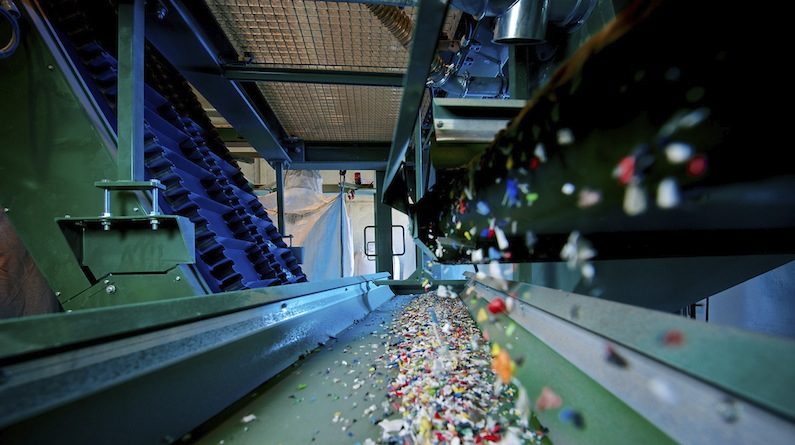
European Plastic Strategy, toward a sustainable economy
Some products take a few seconds to make, a minute to be consumed and centuries to disappear from our environment. As a consequence, plastics are starting to make our citizens seriously worried and plastic waste is becoming a concern that cannot be ignored by policy-makers and by industry.
Or I should rather say plastics as their chemical nature and their specific features are as diverse as their applications: from flexible blood pouches and lightweight and durable car bumpers to packaging of our drinks and foods and the clothes that we are wearing.
All these products contain plastic polymers because of the infinite possibilities and functions polymers offer, their adaptability and relatively low cost.
Plastics help us meet many societal needs in areas such as transport, logistics, infrastructure, food, water and energy supply or medical care. But there is also a downside to the use of plastics.
Their durability means that they do not degrade easily when discarded or disposed of in our landfills.
It is a matter of fact that innovation in the plastic sector has not until now been to improve the recyclability of plastics. Designing plastic items has been done to exploit the extraordinary features of this material as if its production didn’t have any consequences for the environment after use.
Can we really continue to produce plastics without taking care of the piles of plastic waste?
Can industry continue to rely only on plastics produced from fossil resources and ignore
the fact that plastic waste itself is a valuable resource?
Today experts estimate that the equivalent of 3,5 billion barrels of oil per year could be saved if we recycled all global plastic waste.
With the support of the Plastics Strategy adopted on 16 January 2018, it should be possible and economically realistic for designers, resin makers, compounders, converters, waste collectors and recyclers to retain the value of the plastic material in the cycle.
It will not only save money and resources but also prevent half a million tonnes of plastic waste to end up in the oceans, 8 million tonnes of plastic waste to be dumped in landfill and another 10 million tonnes to be incinerated.
What the Commission envisions through the Plastics Strategy is to transform the plastic value chain into a smart, innovative and sustainable industry, with reuse and recycling activities integrated into production chains.
This is an opportunity for European business.
If the value chain coordinates its efforts for a more circular and sustainable economy, with the help of our innovation frameworks and support to investments, then the European plastics industry will remain the very innovative sector that it has always been but with an added value in terms of reduced impacts on the environment.
This will lead to growth and jobs in Europe and reconcile plastics and sustainable development, by decoupling its growth from plastic waste generation.
The shape that the Commission has given to the Strategy represents a toolbox where all useful instruments will be considered equally as long as they contribute to the same goals.
It is not only about centralised regulatory tools but it is essentially more about shared responsibility between the Commission, the Member States, local authorities and all concerned stakeholders.
This holistic approach distributed along each stage of the plastic lifecycle calls upon each actor along the value chain to take its own share of responsibility.
They are invited to commit on voluntary actions and/or to implement the regulatory actions to support more sustainable or circular plastics.
Where the concerns of plastic outweigh their benefits, the Commission announced some regulatory initiatives. This will be the case for addressing the concern of marine litter and microplastics.
As regards microplastics intentionally added to products, works have been initiated to restrict their use after a proper assessment according to the Regulation on Registration, Evaluation, Authorisation and Restriction of Chemicals (REACH).
Further studies are ongoing in cooperation with the concerned sectors to address microplastics which are generated during the use phase (textiles, tyres).
Marine littering which is mainly associated with inappropriate plastics waste management finds also its origin in the wrong behaviour of consumers who throw away the single-use plastic items after consumption, instead of placing them in the recycling bins.
Building on efforts already under way in EU Member States, various options ranging from awareness raising campaigns to phasing out from the market are under assessment for some single-use items clearly found in the marine environment and which affect economical activities, such as tourism and fisheries.
The Commission announced the ambitious objective to make all plastic packaging reusable or recyclable by 2030,
as a signal to plastic industries that they should innovate and organise themselves around such common objectives.
In my view this approach translates the better regulation principles to address the systemic failures observed in the plastic value chain.
The Strategy results from a major effort carried out jointly with Member States, industry, users, consumers and civil society.
Continuing to work closely together on a strong commitment basis is crucial in order to move from a linear to a circular economy here in Europe as well as worldwide.
I am very keen to fill the toolbox of the Plastics Strategy as much as possible during this Commission mandate and to work on adaptation of regulatory instruments, standards, life-cycle assessment tools and supporting measures including a specific research and innovation agenda.
All these actions on Commission’s side, combined with the efforts of others should contribute to the very ambitious transformation of one of our industrial flagships into the most resource efficient sector. This illustrates the purpose of our renewed Industrial Policy.
This will then show the way to other sectors, including other chemical sectors, and convince them of the feasibility and the economic durability of the Circular Economy.




